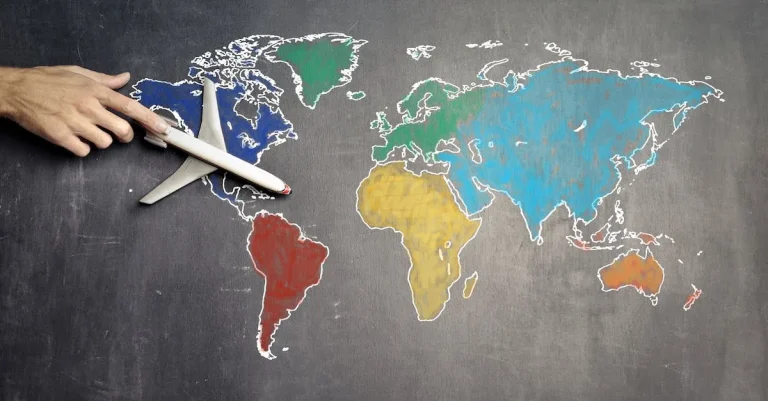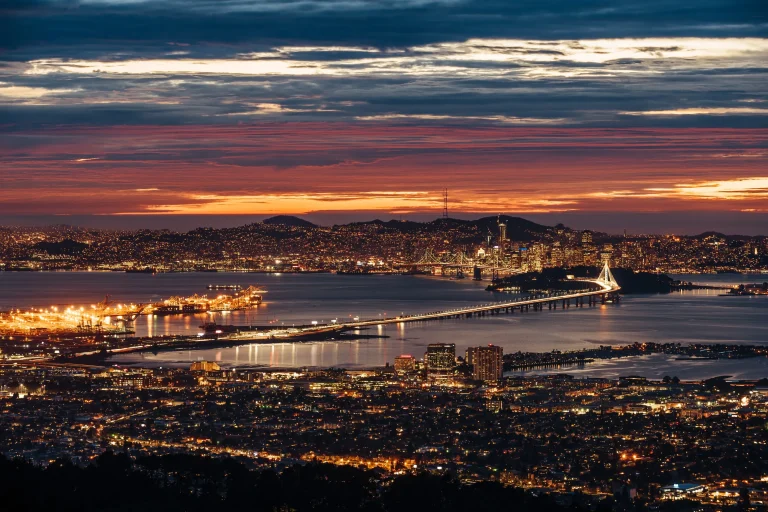Why Is New York Called The Big Apple?
New York City is known by many nicknames, but none is more iconic than the Big Apple. For decades, New Yorkers have proudly embraced this moniker that encapsulates the city’s larger-than-life character. But where did the nickname come from, and how did it stick as New York’s most enduring symbol? Read on to learn the fascinating history behind the Big Apple and how it became an unmatched shorthand for New York City.
If you’re short on time, here’s a quick answer: The ‘Big Apple’ nickname originated in the 1920s to refer to the major money prizes at racetracks in New York. Over time it became a synonym for New York City itself and was popularized in the 1970s tourism campaign.
The Origin of ‘Big Apple’ in 1920s New York
Have you ever wondered why New York City is often referred to as the “Big Apple”? The nickname has become synonymous with the city itself, and it’s hard to imagine calling it anything else. But where did this nickname come from?
Let’s dive into the fascinating history of how New York became the Big Apple.
Early Uses in Horseracing Slang
The term “Big Apple” actually predates its association with New York City. It first appeared in the 1920s in the world of horseracing. Back then, jockeys and trainers referred to New York as the “Big Apple,” meaning the city’s racetracks were the most prestigious and lucrative in the country.
It was a way of saying that if you wanted to make it big in horse racing, you had to come to New York.
This slang term slowly made its way into the mainstream and started being used more widely to refer to the city itself. By the 1930s, it had become a popular nickname for New York City, and it stuck ever since.
A Metaphor for New York’s Preeminence
But why exactly did the term “Big Apple” resonate so strongly with New York City? One theory is that it perfectly captures the city’s grandeur and preeminence. Just like the apple is seen as the biggest and juiciest fruit in the orchard, New York was seen as the biggest and most influential city in America.
New York City has always been a cultural and economic powerhouse, attracting people from all walks of life with its opportunities and allure. From the towering skyscrapers of Manhattan to the vibrant arts scene in Brooklyn, the city has a larger-than-life presence that is embodied in the nickname “Big Apple.”
The term gained even more popularity in the 1970s when it was adopted as an official tourism slogan by the New York Convention and Visitors Bureau. It was used to promote the city as a vibrant and exciting destination, further solidifying its association with New York City.
So the next time you hear someone refer to New York as the “Big Apple,” you’ll know that it’s a nickname with a rich history dating back to the 1920s. It’s a testament to the city’s importance and its enduring legacy as one of the greatest cities in the world.
Popularization in the 1970s
During the 1970s, the nickname “The Big Apple” gained popularity and became synonymous with New York City. This popularization was due to two significant events: Charles Gillett’s campaign and Ed Koch’s adoption of the nickname.
Charles Gillett’s Campaign
Charles Gillett, a sports journalist, played a crucial role in popularizing the nickname “The Big Apple.” In the 1970s, he started using the term in his horse racing columns, referring to New York City as the ultimate destination for horse racing professionals.
His use of the nickname caught on and soon spread beyond the racing community.
Gillett’s campaign to promote New York City as the “Big Apple” was successful because it resonated with people. The metaphorical comparison between the city and a big apple captured the essence of New York’s status as a vibrant, bustling, and diverse metropolis.
It evoked a sense of ambition, opportunity, and excitement that was uniquely associated with the city.
As Gillett’s articles gained traction, other journalists and writers began adopting the nickname, further fueling its popularity. Soon, it became a part of New York’s cultural identity, finding its way into songs, books, and even television shows.
Ed Koch Adopts the Nickname
Another significant event that contributed to the popularization of the nickname was when Ed Koch, the mayor of New York City from 1978 to 1989, embraced it. Koch recognized the marketing potential of the nickname and saw an opportunity to boost tourism and improve the city’s image.
Koch actively used the nickname in his promotional campaigns, emphasizing the city’s vibrant culture, diverse neighborhoods, and endless opportunities. He understood that the nickname had already gained recognition and wanted to capitalize on its positive associations.
Through his efforts, “The Big Apple” became an official part of New York City’s branding and marketing initiatives.
This deliberate adoption of the nickname by the mayor helped solidify its place in popular culture and ensured its continued use and recognition.
Today, “The Big Apple” is synonymous with New York City and is used worldwide to refer to this iconic metropolis. Its popularization in the 1970s, through Charles Gillett’s campaign and Ed Koch’s efforts, has cemented its place in the city’s history and identity.
Why the Nickname Stuck
The nickname “Big Apple” has become synonymous with New York City, but have you ever wondered how it came about? There are several factors that contributed to the nickname sticking, including the city’s outsized spirit, the play on fruit imagery, and the need to distinguish NYC from other cities.
Captures the City’s Outsized Spirit
The nickname “Big Apple” perfectly captures the larger-than-life spirit of New York City. With its towering skyscrapers, bustling streets, and vibrant energy, the city is known for its grandeur and ambition.
The nickname reflects the city’s status as a global hub for finance, culture, and entertainment, where dreams are pursued and fortunes are made. It’s no wonder that the term “Big Apple” has resonated with both locals and visitors alike.
Plays on the ‘Big Apple’ Fruit Imagery
The nickname “Big Apple” also plays on the imagery of a large, juicy apple. In the early 20th century, the term was popularized by horse racing jargon, where “the big apple” referred to the most significant prize or reward.
It was later adopted by jazz musicians who referred to New York City as the “big apple” because it was the ultimate destination for their careers. The term gained further popularity when it was used in a promotional campaign by the New York Convention and Visitors Bureau in the 1970s, solidifying its association with the city.
Distinguishes NYC from Other Cities
New York City is undoubtedly one of the most iconic cities in the world, but it shares its name with other cities and towns across the United States. The nickname “Big Apple” helps to distinguish NYC from these other places, giving it a unique and memorable identity.
When people hear the term “Big Apple,” they immediately know that it refers to the vibrant metropolis of New York City.
The Big Apple Today
The term “Big Apple” continues to be widely used in media and popular culture. From movies and TV shows to music and literature, it has become a recognizable nickname for New York City. People all around the world refer to the city as the Big Apple, and it has become a symbol of its grandeur and excitement.
Still Widely Used in Media and Culture
The Big Apple nickname has been embraced by various industries, including the entertainment industry. In movies like “Sleepless in Seattle” and “Annie Hall,” characters often refer to New York as the Big Apple.
Even in popular TV shows like “Friends” and “Sex and the City,” the term is frequently used to describe the city. Musicians have also incorporated the nickname into their songs, further solidifying its place in popular culture.
The influence of the Big Apple extends beyond the entertainment industry. In literature, authors have depicted New York as the Big Apple in their works. It has become a metaphor for ambition, opportunity, and the bustling energy that characterizes the city.
The term has taken on a life of its own and continues to capture the imagination of people worldwide.
Promoted by Tourism Agencies
The tourism industry has played a significant role in promoting the Big Apple nickname. Tourism agencies in New York City have embraced the moniker as a way to attract visitors. The term is used in marketing campaigns, advertisements, and brochures to highlight the city’s vibrant culture, iconic landmarks, and diverse attractions.
By associating New York City with the Big Apple, tourism agencies create a sense of excitement and allure. It conveys the idea that the city is a must-visit destination with endless opportunities for exploration and enjoyment.
The nickname has become synonymous with the city’s vibrant atmosphere and has contributed to its status as one of the most popular tourist destinations in the world.
A Recognized Symbol of New York Pride
The Big Apple has also become a recognized symbol of pride for New Yorkers. The nickname embodies the city’s resilience, diversity, and ambition. It represents the dreams and aspirations of those who call New York home.
New Yorkers proudly refer to their city as the Big Apple, displaying a sense of ownership and pride. The nickname has become ingrained in the city’s identity, serving as a reminder of its unique character and the indomitable spirit of its residents.
Conclusion
New York City has gone by many monikers, but the Big Apple remains its most iconic nickname. While its origins can be traced to 1920s horse racing parlance, the name encapsulates how New Yorkers view their city as the center of the universe. The Big Apple sums up the grand scale, dynamism, and sheer appetite for greatness that makes New York such a singular metropolis. So next time you hear reference to the Big Apple, know that it’s more than just a catchy epithet – it’s a name that New Yorkers have proudly claimed as their own.








